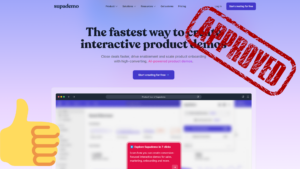5 Keys To Successful Content Hierarchy
Have a lot of information to share? Here's how to make it accessible to customers.
“Content Hierarchy.” It may sound like marketing jargon, but it’s actually pretty basic – we’re talking about the content on your website, and how well that content is organized and presented.
A well-constructed content hierarchy is the difference between a website with a great conversion rate that is easy to navigate… and a total mess.
Here are 5 things to consider when organizing the content on your website:
1.) Content Hierarchy should bring your goals and your visitor’s goals together.
You have goals for your website. You may want to generate leads, sell a physical product, or get someone to sign up for a service.
Your visitors have goals too. Sometimes they’re looking to purchase. Sometimes they just need contact information. Sometimes they want to learn something useful – like you’re doing now.
That’s okay. Because your job is to bring your goals in line with those of your users, so that you both “win”.
For example: do visitors need contact information? Maybe have the phone number above your navigation. Do visitors need to learn about how your services work? Make sure that’s one click away under a “services” menu.
And, keep in mind, their goals can change based on what device they’re using.
For example, a visitor on a mobile device might be on the road and looking for directions to your location. Do you make that really easy to find on a mobile device (for instance, as a ‘sticky’ banner at the bottom of your website)?
You know your customers and you know what they need, so make sure that your site recognizes that. Then, on those pages, put offers or opportunities for those visitors to convert.
2.) Group like content together
If you’ve got blog posts, they should be grouped together. Same with resource pages. Offerings and pricing pages should be closely linked.
Keep your content organized so that it’s easy to flow through relevant – and related – information.
A helpful tool for conceptualizing your website’s hierarchy is with a visual sitemap. It’s like a blueprint for your website to show how pages (and by extension, content,) are connected together. For example, here’s a sitemap for our website:

When visitors make it to our home page, we want to be sure that they are able to find their way around. We make sure our visitors are covered, no matter if they
- want to know more about what we do (and what we know)
- need to learn how much we charge,
- are looking to contact us, or
- want to sign up for our free website review.
We lay out our pages in such a way that they can find their way around with ease. That way, when it comes time for the visitor to access our site, they see something like this:

A well-constructed sitemap makes an effective website. Make sure your sitemap is clean, logical, and easy to navigate for your website visitors.
3.) Map your content to your sales funnel.
This goes back to point 1 a bit – every visitor is going to have a set of goals based on where they are in the buying process. It’s important to recognize that, and to realize what sections of your site appeal to the different segments of your sales funnel.
- Information seekers and investigators at the top of your sales funnel may benefit from blog posts or mailing lists.
- Folks further down the sales funnel may be looking for a means to contact you, or pricing information, or even an e-commerce opportunity.
Make sure that you know what segment of the sales funnel your content is targeting, and make sure it’s pointing them in the right direction to help meet their goals!
4.) Track your progress.
You can’t know if your website is performing well without tracking your goals. For websites, this means getting your hands into the analytics. For most folks, Google Analytics is sufficient. In some cases, though, you may want a more advanced tool like Kissmetrics. (We can help you decide that, as well as automate reporting so you don’t have to remember to check it. Contact us to learn more.)
Whatever analytics you use, make sure that you’re tracking whether your content is converting at the rate you want it to be converting.
Make sure your goals are realistic! Keep your goals SMART – Specific, Measurable, Attainable, Relevant, and Time-Bound – and hold yourself accountable to achieving them.
5.) Keep your visitor within 1-2 clicks of a conversion opportunity
Can you imagine if your Amazon experience took you to 4-5 different pages before you found the pricing information for an item you were interested in? Or if you had to wade through unwanted informative posts, reviews, testimonials and instructions before you could even find a place to enter your shipping address?
Sound brutal?
It is.
So don’t do it to your visitors!
Websites are interactive and subjective- everyone experiences your site differently, so don’t assume you know where your users are in their journey. Always give them the opportunity to convert- they should never be more than 1-2 clicks away from accomplishing their goal… and, by extension, yours.
Are you utilizing effective content hierarchy? Sign up for a free website review. Our Pros can help you determine the best overall content hierarchy for your website, and help drive more traffic to your business!









